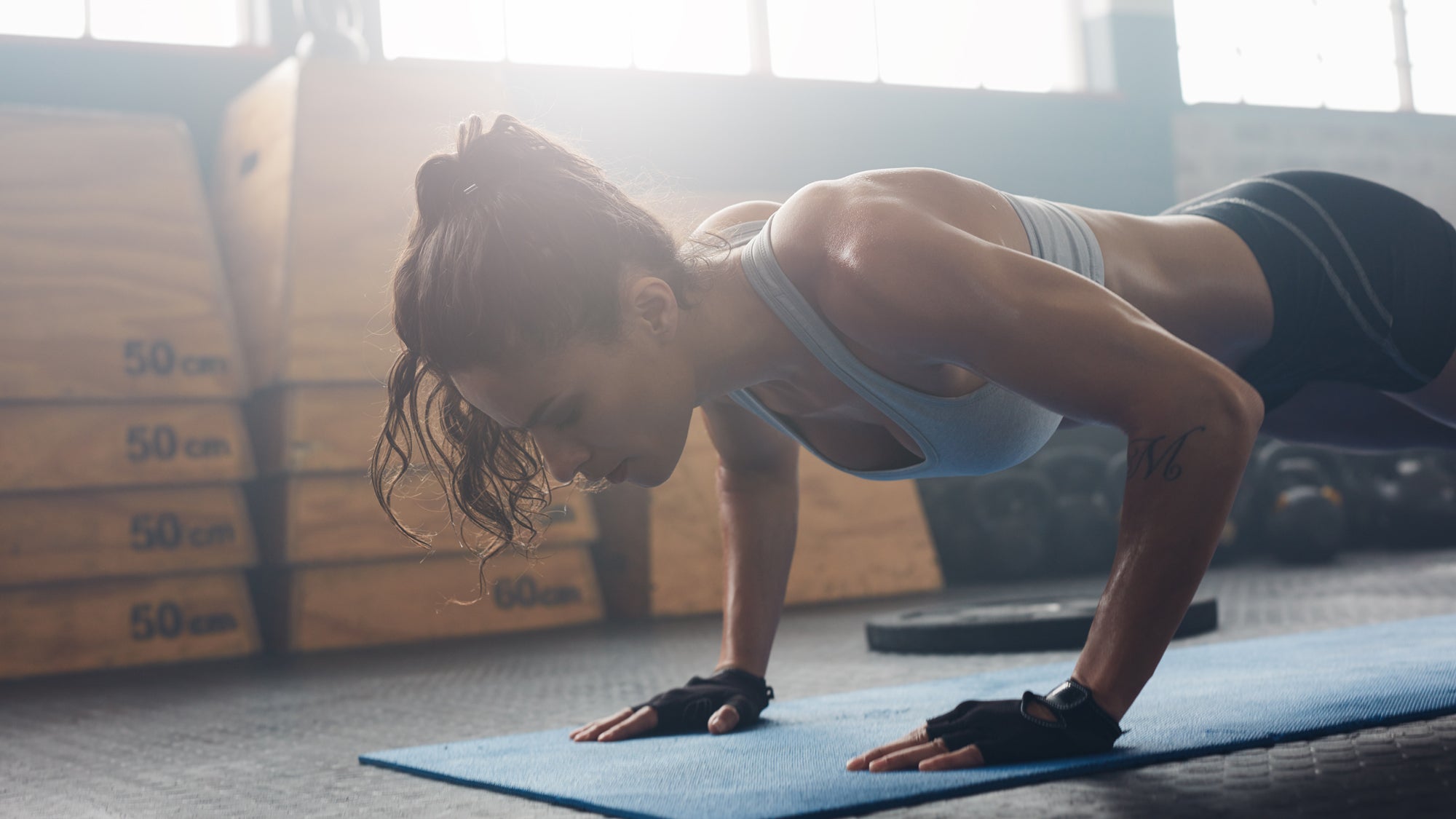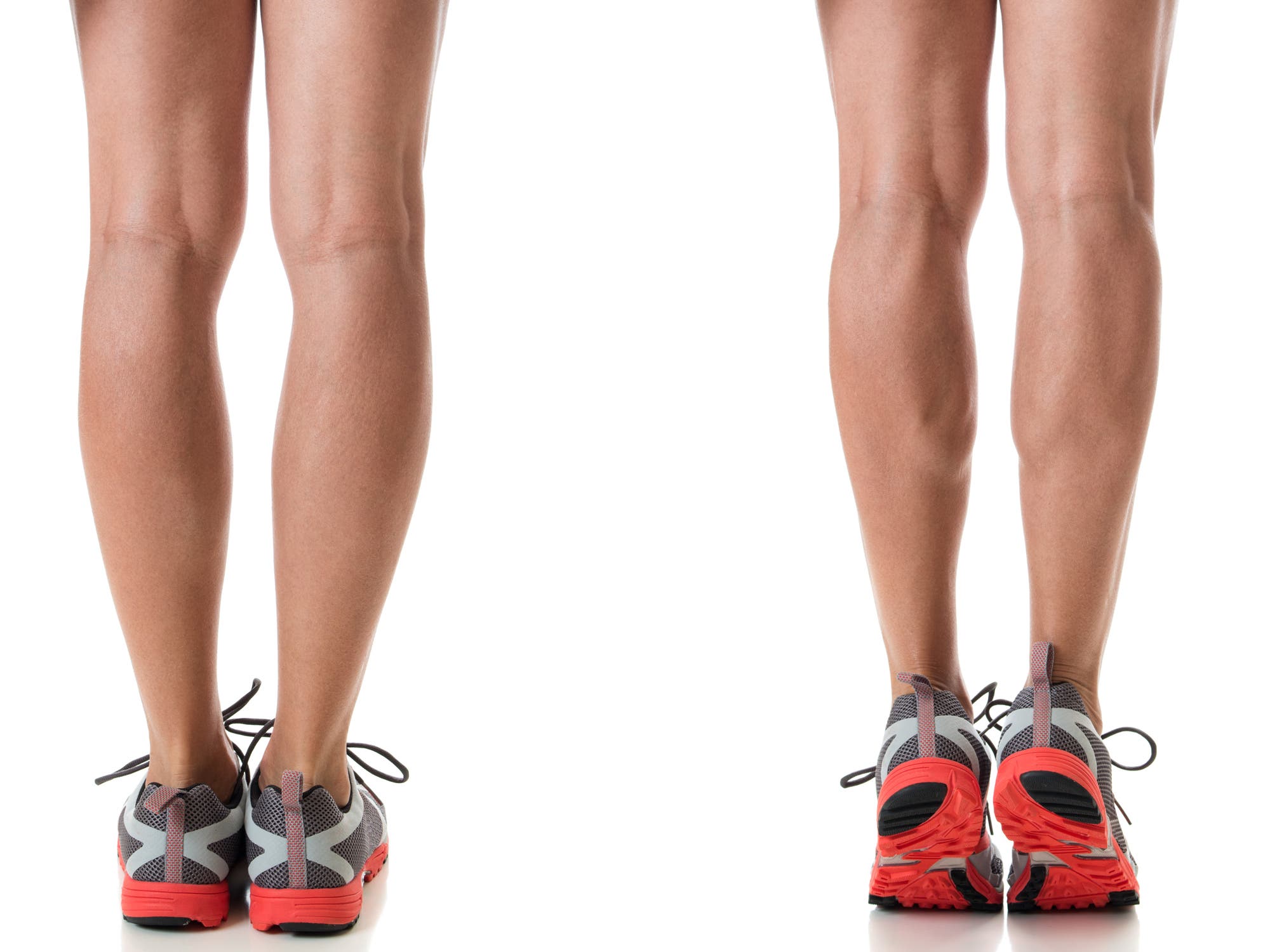These 4 Static Strength Exercises Will Make You a Better Athlete

Isometric exercises, also known as static strength exercises, are contractions of a particular muscle for an extended period of time. You get into a fixed position and hold it for as long as you can. Including isometric training in your training routine has the dual benefit of injury prevention and strength building. Each static exercise builds a foundation of strength to support you when you advance to more dynamic, explosive routines. They are particularly beneficial when rebuilding from injury.
To get the most out of isometric exercises, focus on one area of your body and do different variations of each pose. Over time, consistently doing isometric exercises can help increase strength and improve body control when attempting dynamic exercises—which includes running. With isometric exercises, unlike dynamic exercises, you can safely increase strength with a low chance of injury because there’s no impact or complicated movements required to complete them.
The following four exercises will ensure your entire body is being challenged to get stronger and reveal any areas of weakness. They’re simple to try, you can do them anywhere and they’ll give you a solid start toward gaining new levels of strength.
MEMBER EXCLUSIVE: Watch the video
Isometric Static Strength Exercise #1: Calf Raise Hold

This exercise will prepare you for dynamic skips and hops, and enable a powerful stride. You can do this exercise with or without supporting your balance. Start by using with both legs, raise your heels and lift your body off the ground. Once you get as high as you can go, hold this position for 1 minute, then slowly come back down.
As your body gets comfortable with this new stress, you can add another 30 seconds at a time you until you reach 5 minutes. Advance to lifting and holding with one leg and without support to increase your balance. Do 1–2 times a week.
Isometric Static Strength Exercise #2: Chair Squat Hold

This will build the strength needed for more dynamic and explosive squats, and help create a powerful and resilient stride. When first starting out with this isometric exercise it’s ideal to use a wall to lean against. Place your back flat against the wall. Slide down until you reach a 90 degree angle. Keeping your back flat against the wall (especially your lower back), take a deep breath and hold the “chair” position for 2–3 minutes. Most beginners can hold the position for no more than 2 minutes. Add 30-second increments until you reach 7–10 minutes or complete fatigue.
Advance to squatting and holding without the wall, ensuring that you stay in the “chair” position with your knees over your feet. Do 1–2 times a week.
Isometric Static Strength Exercise #3: Push-up Plank Hold

Planks build postural strength around your lower core that is essential for running “tall.” Get into a push-up position, straighten your arms, tighten your core and straighten your legs. It is essential to make sure your butt is down and in line between your shoulders and heels. Once you have your body positioned, hold the push-up position for 2–3 minutes. Most beginner may be able to get to 2 minutes before proper technique goes out the window. Stop when you can no longer hold the pose. Add 30-second increments until you reach 7–10 minutes.
You can vary the plank by supporting yourself on your elbows and by lifting one leg toward your chest. Advance to adding side planks. Do 1–2 times a week.
Isometric Static Strength Exercise #4: Pull-up Hold

Your entire upper body and core engage during this exercise, building the strength to run tall and to drive your arms back, creating a powerful stride. To start, grasp pull-up bar with hands shoulder-width apart. Pull yourself up until your upper chest is even with the bar. With elbow down, focus on squeezing the shoulder blades together and hold the position for 1–2 minutes. When you’re ready to come down, slowly lower yourself until your arms are nearly straight and then drop to the ground. Add 30-second increments until you reach 3–5 minutes.
You can vary your handhold direction and width of your grasp to alter the stresses of the each static strength exercise. Do 1–2 times a week.